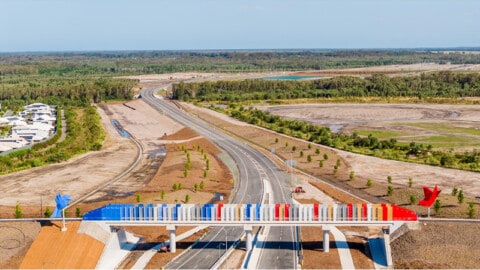The Reserve Bank of Australia has highlighted the importance of infrastructure in generating future growth.
Luci Ellis, Assistant Governor at the Reserve Bank of Australia, addressed the challenges within infrastructure and its importance to long-term global economic growth during a speech at the Infrastructure Partnerships Australia luncheon in June 2018.
Dr Ellis highlighted a number of challenges for the industry.
“One typical challenge is risk management. Infrastructure risk takes many forms. There’s the risk that the project is not built efficiently, that investors are unwilling, that demand is too high – leading to congestion – or not high enough. There are risks that revenue can’t be collected as intended. There are risks that the construction isn’t resilient to natural disasters or just ordinary wear and tear,” Dr Ellis said.
“Another typical challenge is financing. Most infrastructure assets cost a lot upfront to build, and their monetary return – if any – is only realised over a long period. This can still be an attractive payoff structure for private investors, depending on how the project is structured.
“A common thread in these challenges is that the nature of the risks and funding issues are very different in the ‘build phase’ than in the ‘run phase’, once the infrastructure is being used. This is true of any large construction project and, similarly, one solution can be to have different actors involved in the two stages.
Dr Ellis noted that policy changes and sharing information – such as through the Global Infrastructure Hub (GI Hub) – would be key in countries such as Australia assisting emerging countries with their infrastructure development.
“The good news is that, if we face common challenges, the solutions are also likely to be common. We can learn from each other. So there is value in sharing information about best practice across countries,” Dr Ellis said.
“If you think about it, the principles for designing a good road network or locating a railway line don’t really change according to where you live. There will be differences relating to legal frameworks or other national specifics, but most of what constitutes best practice will be universal.”
Dr Ellis also emphasised the far-reaching impact that the development of infrastructure creates, beyond the “raw contribution of the building work to GDP growth”.
“More broadly, and over a longer horizon, the economy benefits from a larger capital stock and the productivity benefits of infrastructure of this type. These are often hard to quantify even after the fact, but some examples might include: new export businesses enabled by the construction or expansion of an airport; higher productivity of logistics firms if their vehicles spend less time in traffic; and better health outcomes from reduced accident rates when roads are made safer.”















